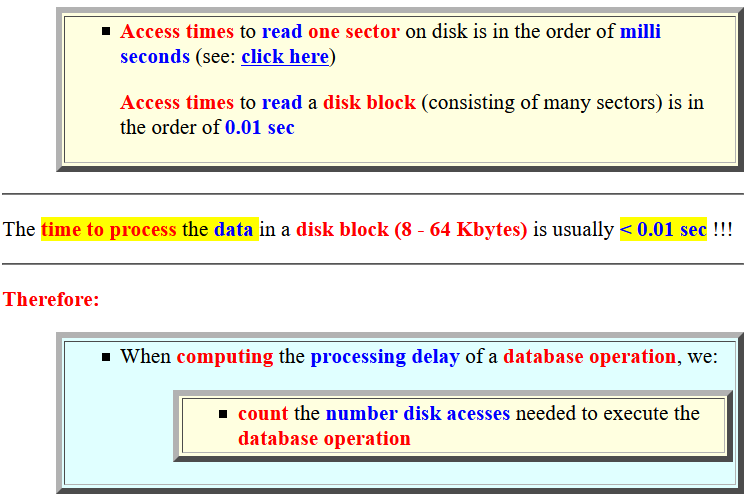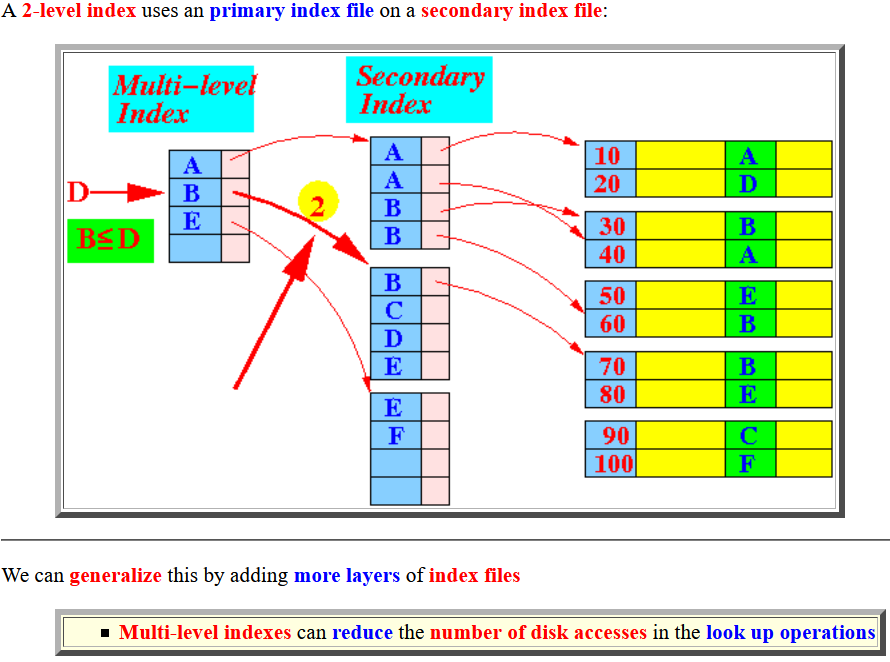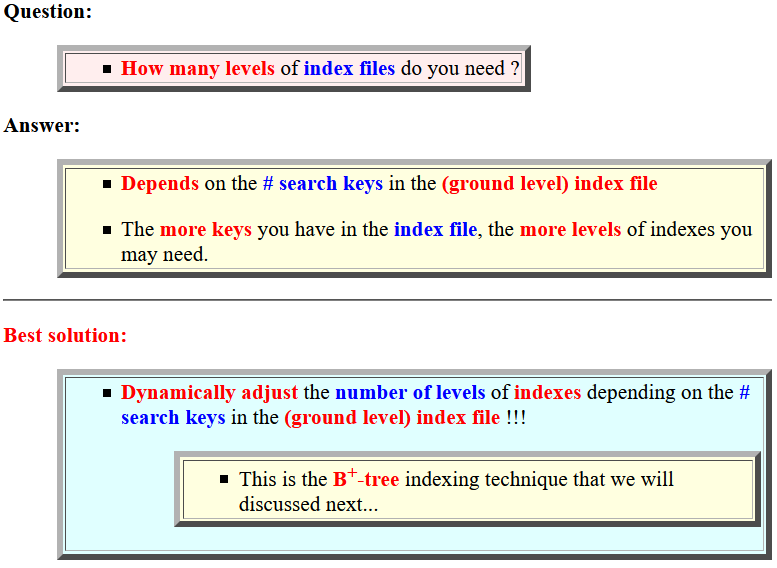Slideshow:
- Recall:
- Access times to
read
one sector on disk
is in the order of
milli seconds
(see:
click here)
Access times to read a disk block (consisting of many sectors) is in the order of 0.01 sec
- Access times to
read
one sector on disk
is in the order of
milli seconds
(see:
click here)
- The
time to process the
data
in a disk block (8 - 64 Kbytes)
is usually
< 0.01 sec !!!
- Therefore:
- When computing the
processing delay of
a database operation, we:
- count the number disk acesses needed to execute the database operation
- When computing the
processing delay of
a database operation, we:
- Consider the following
example:
- Ordered index on
a data file containing
100 records:
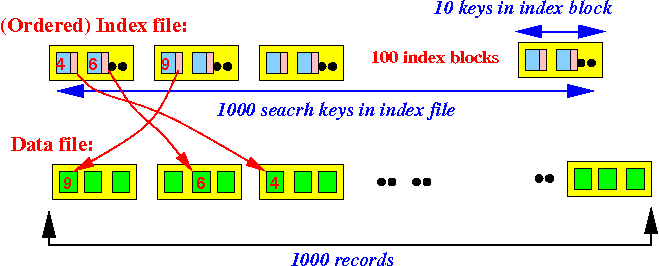
Each index disk block stores 10 indexes
The index file contains of 100 disk blocks
Question:
- How many disk block accesses do you need to find the database address of the record using a search key ?
Answer:
- We can use
binary search in the
index file to
find the index record that
contains the search key:
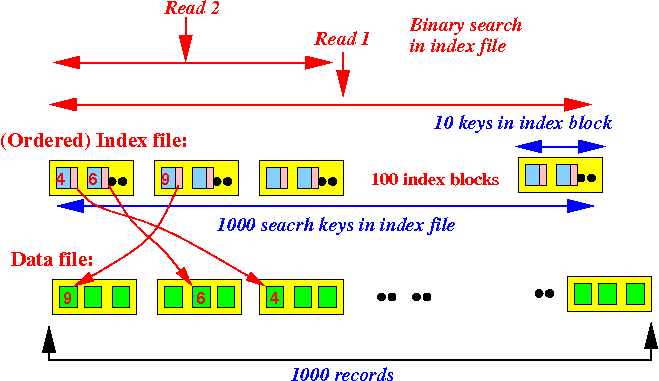
- Since there are 100 disk blocks,
in the worst case, we
will access:
- 2 log( 100 ) ~= 7 index blocks
- Ordered index on
a data file containing
100 records:
- A 2-level index
uses an
primary index file
on a
secondary index file:

- We can generalize this
by adding
more layers of
index files
- Multi-level indexes can reduce the number of disk accesses in the look up operations
- Consider the
original
ordered index file:

- We can add
a primary index on the
index file
(just like the above example):

Because the number of index blocks on the second level index is still large, we can add a 3rd level index file on the 2nd level index:
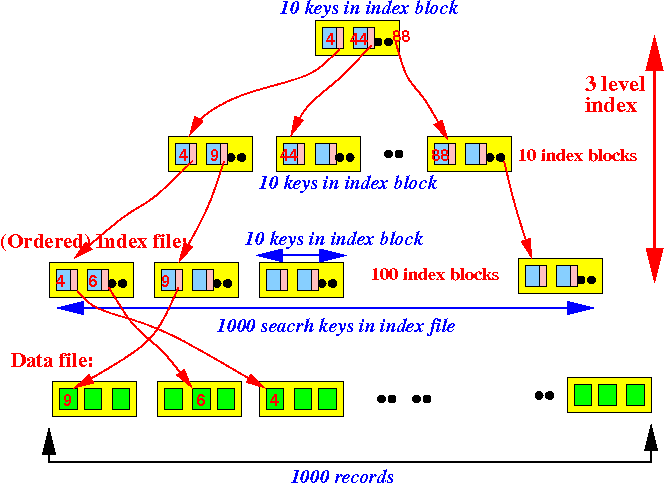
Question:
- How many disk block accesses do you need to find the database address of the record using a search key ?
Answer:
- We can use
top level index
to find the index block
in the 2nd level index that
will (guaranteed) contain the
search key:
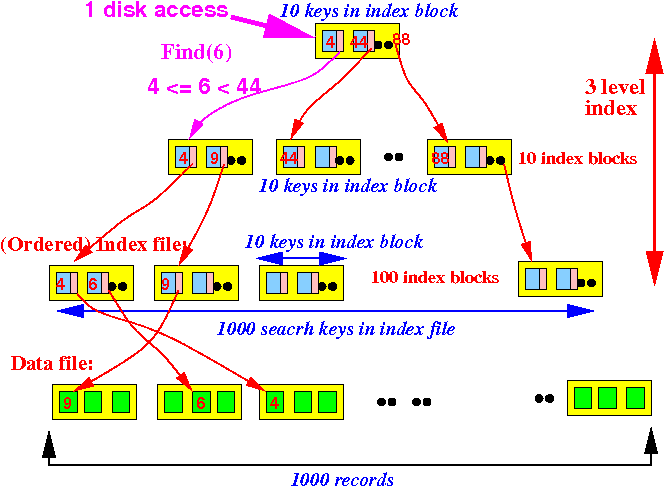
- Then, we use
2nd level index
to find the index block
in the final level index that
will (guaranteed) contain the
search key:
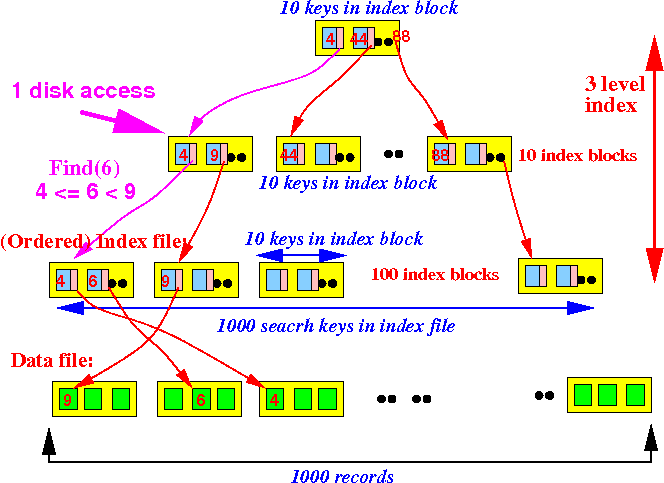
- Finally, we
access the
(orignal) index file block and
find the
database address for
the record:
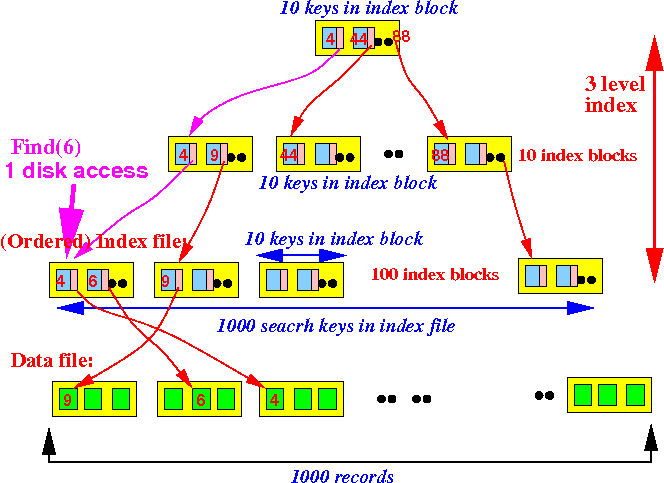
- # disk IO operations need to
find the database address for the
record:
3 disk accesses !!!
- So the number of disk IO is significantly reduced using a multi-level index file !
- Question:
- How many levels of index files do you need ?
Answer:
- Depends on the
# search keys in the
(ground level) index file
- The more keys you have in the index file, the more levels of indexes you may need.
- Best solution:
- Dynamically adjust the
number of levels of
indexes depending
on the
# search keys
in the (ground level) index file !!!
- This is the B+-tree indexing technique that we will discussed next...
- Dynamically adjust the
number of levels of
indexes depending
on the
# search keys
in the (ground level) index file !!!
